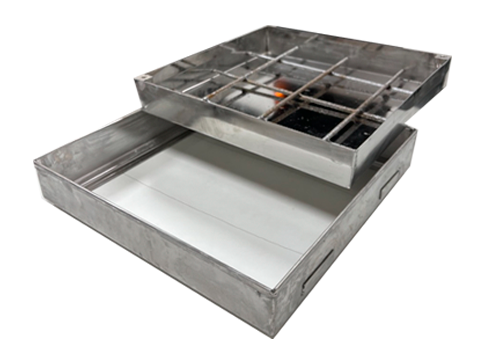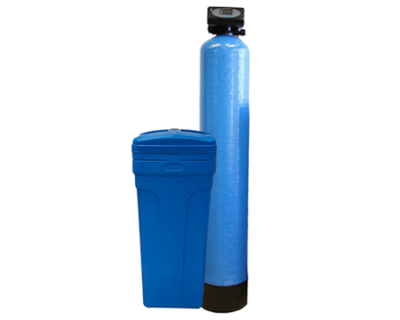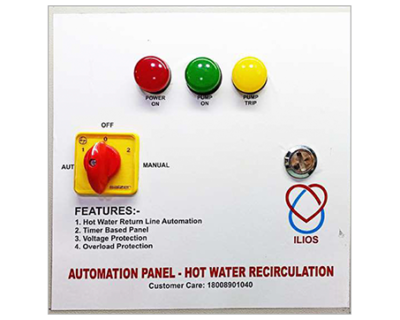
A Comprehensive Guide to Manhole Covers and Their Importance
Manhole covers are seemingly ordinary objects, but they play a very important role in keeping public spaces safe and functional. Whether you’re maintaining a property or overseeing a construction project, selecting the right manhole covers is much more complicated than it seems. They come in different shapes, sizes, materials, and load-bearing capacities, and making the wrong choice can lead to safety risks and unnecessary costs.
This blog is a complete guide for everything you should know about manhole covers. You will come to understand all the different types, uses, and how to choose the right one for your needs by the end of it.
What Are Manhole Covers?
Manhole covers are removable plates that cover the opening of a manhole, which provides access to underground utilities such as sewers, drainage systems, and electrical lines. These covers are important in preventing accidents, keeping debris out of the manhole, and protecting the utilities below.
Manhole covers are built to withstand tremendous pressure, thus making them tough and long-lasting. However, specifications of manhole covers differ based on where they are to be used, hence making the right choice crucial.
Why Right Manhole Covers Are Important
Choosing the right manhole covers is not just about fitting them into the opening. Here’s why it matters:
Safety: The most important role of manhole covers is to ensure safety. A weak or a wrongly sized cover can cave in under pressure, thereby becoming a danger to both pedestrians and vehicles.
Durability: Manhole covers made from inappropriate materials may wear out soon, and thus it requires frequent replacement.
Compliance: Many regions have their own regulations regarding manhole covers, especially in public places. A wrong cover might lead to fines or even legal issues.
Cost Efficiency: The right manhole covers save money in the long run by reducing maintenance and replacement costs.
Types of Manhole Covers
Manhole covers come in different types based on their material, shape, and load-bearing capacity. Here’s a closer look:
- Materials
Cast Iron: Known for its strength and durability, cast iron is one of the most common materials for manhole covers.
Ductile Iron: Just like cast iron but lighter in weight and more flexible, it does not crack easily and is therefore often used for modern installations.
Steel: These are lightweight corrosion-resistant covers suitable for areas with lighter loads.
Composite Materials: These are made from fiberglass or other synthetic materials. They are both lightweight, non-corrosive, and theft-proof because they have no scrap value.
- Shapes
Round: These are the most common types. Their round shape keeps them from falling into the opening, hence safer.
Square or Rectangular: Used in certain applications, for example, sidewalks or unique drainage systems in areas.
- Load-Bearing Capacity
Light Duty: Pedestrian areas, parks, and gardens.
Medium Duty: For residential streets where light vehicular traffic is present.
Heavy Duty: In roads and highways, and in an industrial area where heavy vehicles run.
Things to Consider While Choosing Manhole Covers
Choosing appropriate manhole covers involves examining several factors. Here’s what you need to be aware of:
- Location
The environment in which you are going to install manhole cover determines its specification. For example:
Residential areas may require light or medium-duty covers.
Highways or industrial zones may require heavy-duty covers as they have to face heavy traffic and pressure.
- Material
Each material has its pros and cons. Cast iron and ductile iron are ideal for durability, but composite materials are resistant to theft and lightweight.
- Load Requirements
The load requirements ensure that the cover will not crack or collapse under pressure. Always check the manufacturer’s weight limit specifications.
- Dimension and Form
Manhole covers have to tightly fit over the opening. Measure the dimensions carefully before buying.
- Theft-Proof
Theft of metals is a major problem in some areas. There are composite or locking manhole covers that prevent theft and enhance security.
Common Errors While Selecting Manhole Covers
The wrong choice would lead to costly mistakes. Avoid these common mistakes:
Neglecting Load Capacity: Installing a light-duty cover in a high-traffic area may result in accidents.
Neglecting Material Quality: Low-quality materials will save money initially but may need to be replaced often.
Incorrect Size: An improperly fitting manhole cover may pose safety risks and operational problems.
Neglecting Compliance Checks: Always ensure the cover complies with local regulations.
Manhole Cover Maintenance
Even the best manhole covers require regular servicing to be at their prime. Here are some of the tips on how this can be achieved:
Inspections: They should have cracks, rust, and other signs of wear.
Cleaning: This is where the area surrounding the manhole cover needs to be free from debris that may eventually pile up.
Fitting: The cover should always fit properly without shifting along the way.
Replacement: Broken or worn-out covers must be replaced quickly to prevent mishaps.
Quality Manhole Covers for Sale
When buying manhole covers, you should select a reputable supplier that will provide you with quality and compliance. Consider suppliers that have various options and detailed specifications. The best way to get good products is through reading the reviews of the customers or asking for recommendations.
Conclusion
Manhole covers may seem less significant parts of urban structure, but their importance just cannot be overstated enough. You can ensure safety by choosing the right type or material and size.




